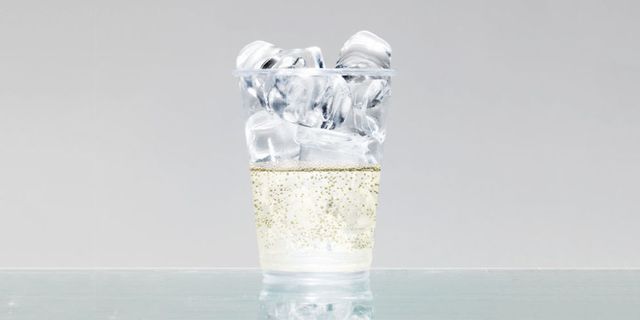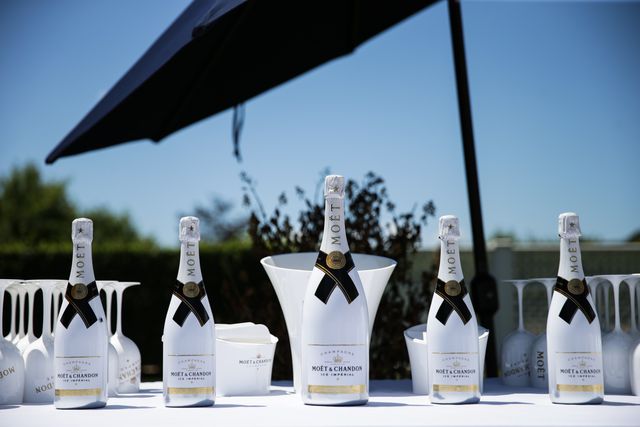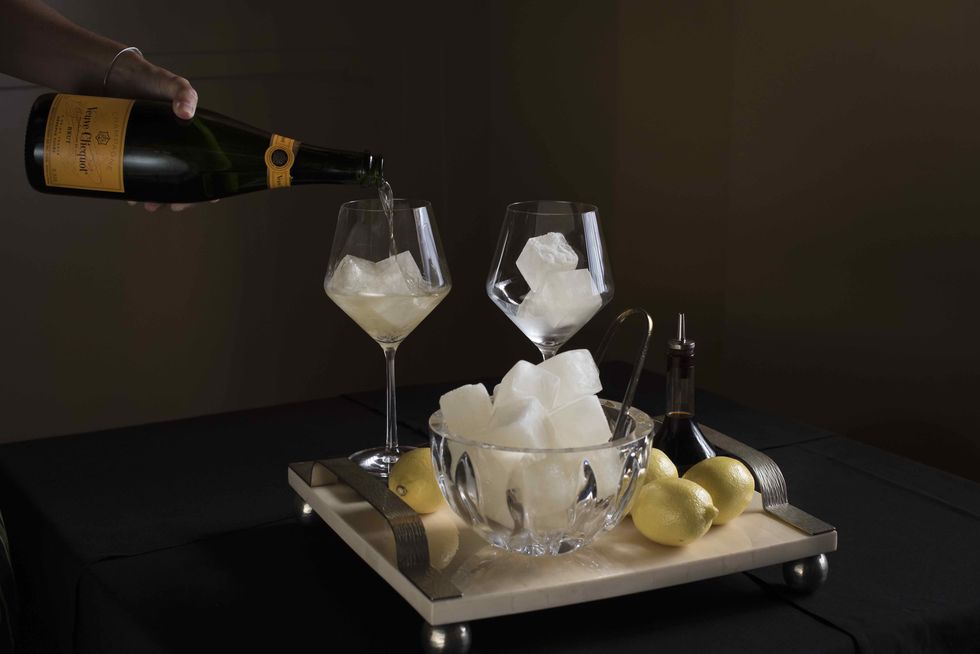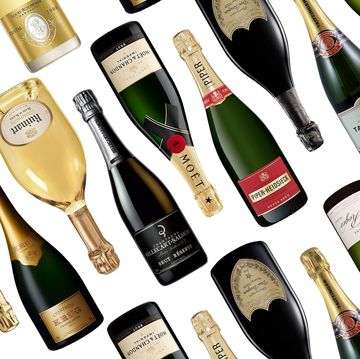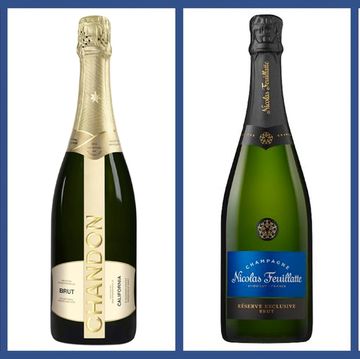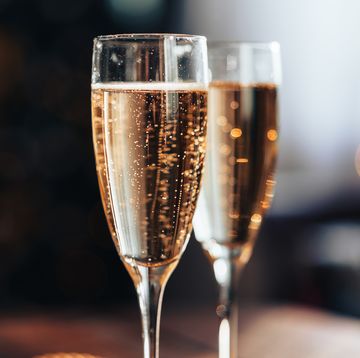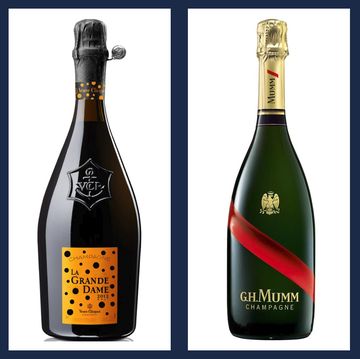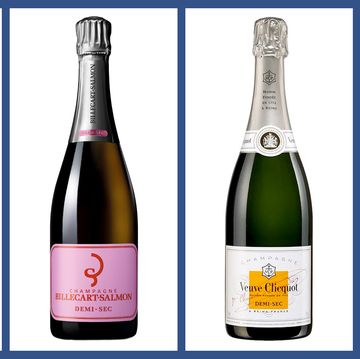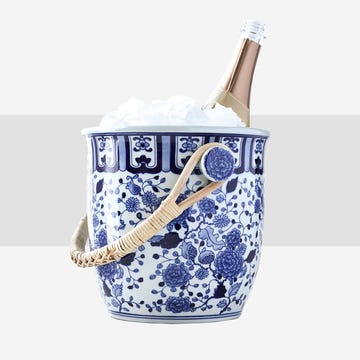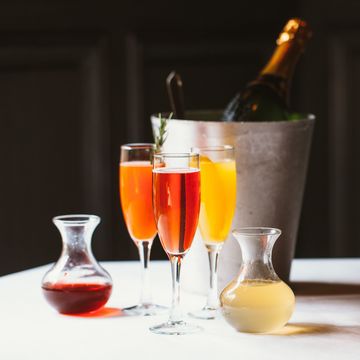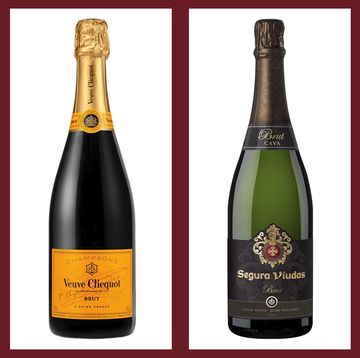When it comes to champagne, what's cooler than being cool? Ice cold.
For many years, champagne was seen as something ceremonial and rigid, only served at a precise temperature and with specific glassware. Now winemakers are introducing new blends of bubbles that are casual, fun, and meant to be served bracingly cold.
The new way to drink champagne? In a large goblet with a healthy handful of ice cubes. Americans may raise their eyebrows but winemakers say the iced champagne tradition began with the French themselves.
"We found some emerging trends in the south of France, of drinking champagne with ice," Moët & Chandon chef de cave Benoît Gouez says. "We realized that during the warmer season, people want to drink chic but they also need to be refreshed and they want to enjoy it in a more casual way."
"Instead of saying, 'No way, champagne is too chic to add ice to it', we tried to understand what the consumers were looking for," he adds.
What consumers want is something like a rosé wine, a beverage that is chill in all senses of the word.
The result: Moët & Chandon Ice Imperial, the first blend developed for drinking over ice, debuted in 2011, and its sister blend, Ice Imperial Rosé, which debuted last summer. These are new products, because adding too much ice to or serving a traditional champagne too cold mutes the liquid's delicate flavor profiles.
"When something is too cold, you will no longer be able to taste it," Park Hyatt New York wine director Tristan Prat-Vincent says. "The reason they have to formulate it much stronger is so that you can still taste the champagne."
The new raft of products, which includes Veuve Clicquot Rich, Pommery Royal Blue Sky, JP Chenet Ice, Calvet Ice, Champagne Lanson White Label, and François Montand Ice, feature stronger, sweeter blends, that really shine when they are frosty and slightly diluted from the ice.
In fact, wine experts caution the new blends will not taste good on their own.
"If you try to drink this champagne without ice cubes, it would be a big mistake," Pommery U.S. sales and marketing director Stan Thierry says. "It would be much too sweet." The breaking up of ice cubes in the glass is what tames the sweetness and highlights a fresh minerality, he adds.
While iced champagne makes sense for warm-weather season, wine brands are hoping to see the new ice blends follow the trajectory of rosé. The pink wine, which first emerged as a casual summer drink, has transformed itself into a year-round easy spirit, a kind of shorthand for daytime parties and friendly gatherings.
"I would say that this is a champagne you want to drink when the sky is blue," Pommery's Thierry says, noting that even very cold days can be sunny.
While iced champagnes are served in warm-weather locations like Malibu and Hawaii, at least one ski resort is taking the ice cold trend literally. The Fairmont Tremblant, located in Quebec, Canada, where winter evening temperatures start in the low teens and drop from there, features a Veuve Clicquot bar on its outdoor pool terrace most evenings during its winter season. Since December, drink options include Veuve Clicquot Rich, served in goblets with ice and fresh garnishes.
In New York City, there's yet another twist to the iced Champagne trend. Squares, a nightclub steps from Madison Square Park in Manhattan, serves Veuve Clicquot champagne over Veuve ice cubes. (Home chefs are warned: Making ice cubes out of champagne is possible, but only with restaurant-quality Sub-Zero freezers.)
"It's a lighthearted but elegant presentation for champagne," Squares head bartender Bryan Schneider says. "In the club setting when there is so much stimulation around you, you just want a cold dry drink to dance with. Super cold champagne in a hot club just sounds so nice. I'll forgo some of the flavors that go missing."
Winemakers are betting that the ice-and-bubble trend is here to stay. "This new generation is not interested in things that are too serious," Moët's Gouez says. "I think it's become a trend to promote things that are serious in their making but casual in their perception."
He adds: "In a way, today's innovation is tomorrow's tradition."
